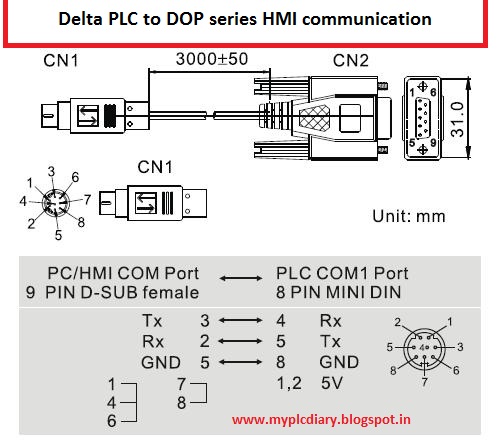Ad Code
Random Posts
3/random/post-list
PLC Selection criteria
Karthick N
09:08:00
There are many criteria's for selecting appropriate PLC controller.Namely,
* System requirements.
* Application requirements.
* What input/output capacity is required?
* What type of inputs/outputs are required?
* What size of memory is required?
* What speed is required of the CPU?
* Electrical requirements.
* Speed of operation.
* Communication requirements.
* Software.
* Operator interface.
* Physical environments.
* Application requirements.
* What input/output capacity is required?
* What type of inputs/outputs are required?
* What size of memory is required?
* What speed is required of the CPU?
* Electrical requirements.
* Speed of operation.
* Communication requirements.
* Software.
* Operator interface.
* Physical environments.
System requirements
* The starting point in determining any solution must be to understand what is to be achieved.
* The program design starts with breaking down the task into a number of simple understandable elements, each of which can be easily
described.
* The starting point in determining any solution must be to understand what is to be achieved.
* The program design starts with breaking down the task into a number of simple understandable elements, each of which can be easily
described.
Application requirements
* Input and output device requirements. After determining the operation of the system, the next step is to determine what input and
output devices the system requires.
* List the function required and identify a specific type of device.
* The need for special operations in addition to discrete (On/Off) logic.
* List the advanced functions required beside simple discrete logic.
* Input and output device requirements. After determining the operation of the system, the next step is to determine what input and
output devices the system requires.
* List the function required and identify a specific type of device.
* The need for special operations in addition to discrete (On/Off) logic.
* List the advanced functions required beside simple discrete logic.
Electrical Requirements
The electrical requirements for inputs, outputs, and system power; When determining the electrical requirements of a system, consider three items:
The electrical requirements for inputs, outputs, and system power; When determining the electrical requirements of a system, consider three items:
- Incoming power (power for the control system);
- Input device voltage; and
- Output voltage and current.
Speed of Operation
How fast the control system must operate (speed of operation).
When determining speed of operation, consider these points:
– How fast does the process occur or machine operate?
– Are there “time critical” operations or events that must be detected?
– In what time frame must the fastest action occur (input device detection to output device activation)?
– Does the control system need to count pulses from an encoder or flow-meter and respond quickly?
How fast the control system must operate (speed of operation).
When determining speed of operation, consider these points:
– How fast does the process occur or machine operate?
– Are there “time critical” operations or events that must be detected?
– In what time frame must the fastest action occur (input device detection to output device activation)?
– Does the control system need to count pulses from an encoder or flow-meter and respond quickly?
Communication
If the application requires sharing data outside the process, i.e. communication. Communication involves sharing application data or status with another electronic device, such as a computer or a monitor in an operator’s station. Communication can take place locally through a twisted-pair wire, or remotely via telephone or radio modem.
If the application requires sharing data outside the process, i.e. communication. Communication involves sharing application data or status with another electronic device, such as a computer or a monitor in an operator’s station. Communication can take place locally through a twisted-pair wire, or remotely via telephone or radio modem.
Operator Interface
If the system needs operator control or interaction. In order to convey information about machine or process status, or to allow an operator to input data, many applications require operator interfaces. Traditional operator interfaces include pushbuttons, pilot lights and LED numeric display. Electronic operator interface devices display messages about machine status in descriptive text, display part count and track alarms. Also, they can be used for data input.
If the system needs operator control or interaction. In order to convey information about machine or process status, or to allow an operator to input data, many applications require operator interfaces. Traditional operator interfaces include pushbuttons, pilot lights and LED numeric display. Electronic operator interface devices display messages about machine status in descriptive text, display part count and track alarms. Also, they can be used for data input.
Physical Environment
The physical environment in which the control system will be located. Consider the environment where the control system will be located. In harsh environments, house the control system in an appropriate IP-rated enclosure. Remember to consider accessibility for maintenance, troubleshooting or reprogramming.
The physical environment in which the control system will be located. Consider the environment where the control system will be located. In harsh environments, house the control system in an appropriate IP-rated enclosure. Remember to consider accessibility for maintenance, troubleshooting or reprogramming.
Ratings:
Platform:
WindowsRandom Posts
3/random/post-list
Recent in War
3/War/post-list
Popular Posts

PLC Program example No-2
22:21:00

PLC Analog Control Applications
04:59:00
Footer Menu Widget
Created By SoraTemplates | Distributed By e aadhar card







0 Comments